How to grow roses from cuttings – the best way to expand your rose garden for free
Enjoy free and thriving rose plants
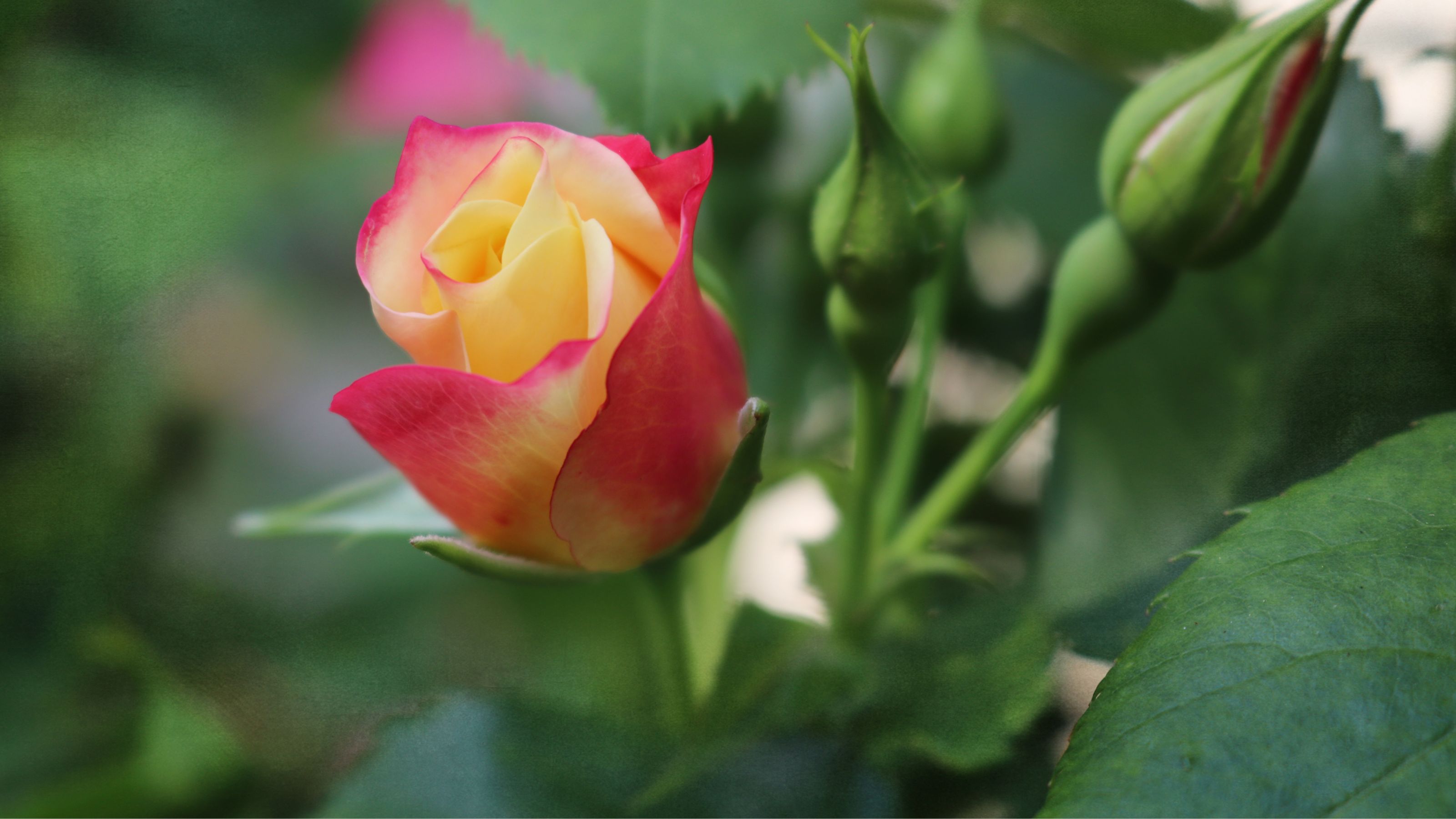

Kayleigh Dray
'Of all flowers, methinks a rose is best,' said William Shakespeare – and, considering how popular these flowers are around the world, it seems The Bard is in good company with his opinions.
Considering all of their good press, then, it makes sense that these romantic blooms can be costly. Thankfully, if you learn how to grow roses from cuttings, you can fill up your flower bed for free – and have a lot of fun in the process, too.
Now, it's actually very easy take rose cuttings from your existing plant (trust us: even beginners will be able to manage it!), and we've got all the expert tips and advice you need to transform those very same cuttings into thriving plants. You ready?
How to grow roses from cuttings
'If you love roses, you’ll be pleased to know that you can grow more for free by learning to grow roses from cuttings – which you can absolutely take from your current roses,' says Morris Hankinson, director of Hopes Grove Nurseries.
In fact, roses are on our list of the best plants to grow from cuttings.
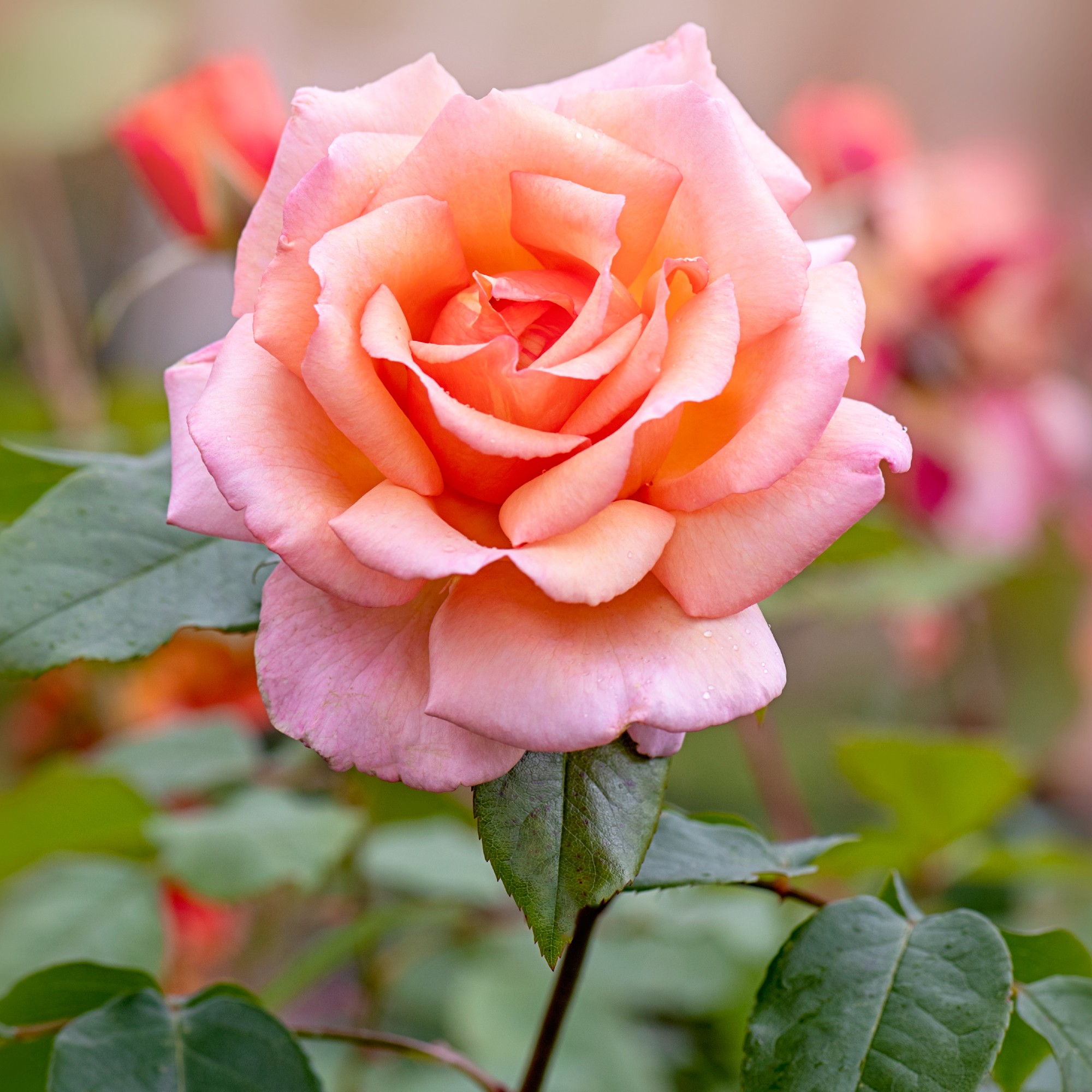
'Even better? Find out if your family and friends might be happy to swap some rose cuttings with you, as it’s a cost effective way to add more to your garden,' he adds.
Of course, you could spend a while figuring out how to grow rose cuttings in potatoes (yes, really), but there's a more straightforward approach for anyone who doesn't fancy faffing about with peelings...
Get the Ideal Home Newsletter
Sign up to our newsletter for style and decor inspiration, house makeovers, project advice and more.
What you’ll need
Before you set to work learning how to grow roses from cuttings in earnest, it's a good idea to make sure you have all of the tools and equipment you need to hand.
To that end, then, add the following to your shopping list:
- A pair of clean and sharp secateurs, like the GRÜNTEK Secateurs from Amazon
- A rooting hormone, like Doff 75G-Ke075 Natural Rooting Powder from Amazon
- A good peat-free potting mix, like Westland John Innes No.1 Young Plants Compost from B&Q
- A selection of planting pots, like these Stackable Terracotta Pots from ASDA
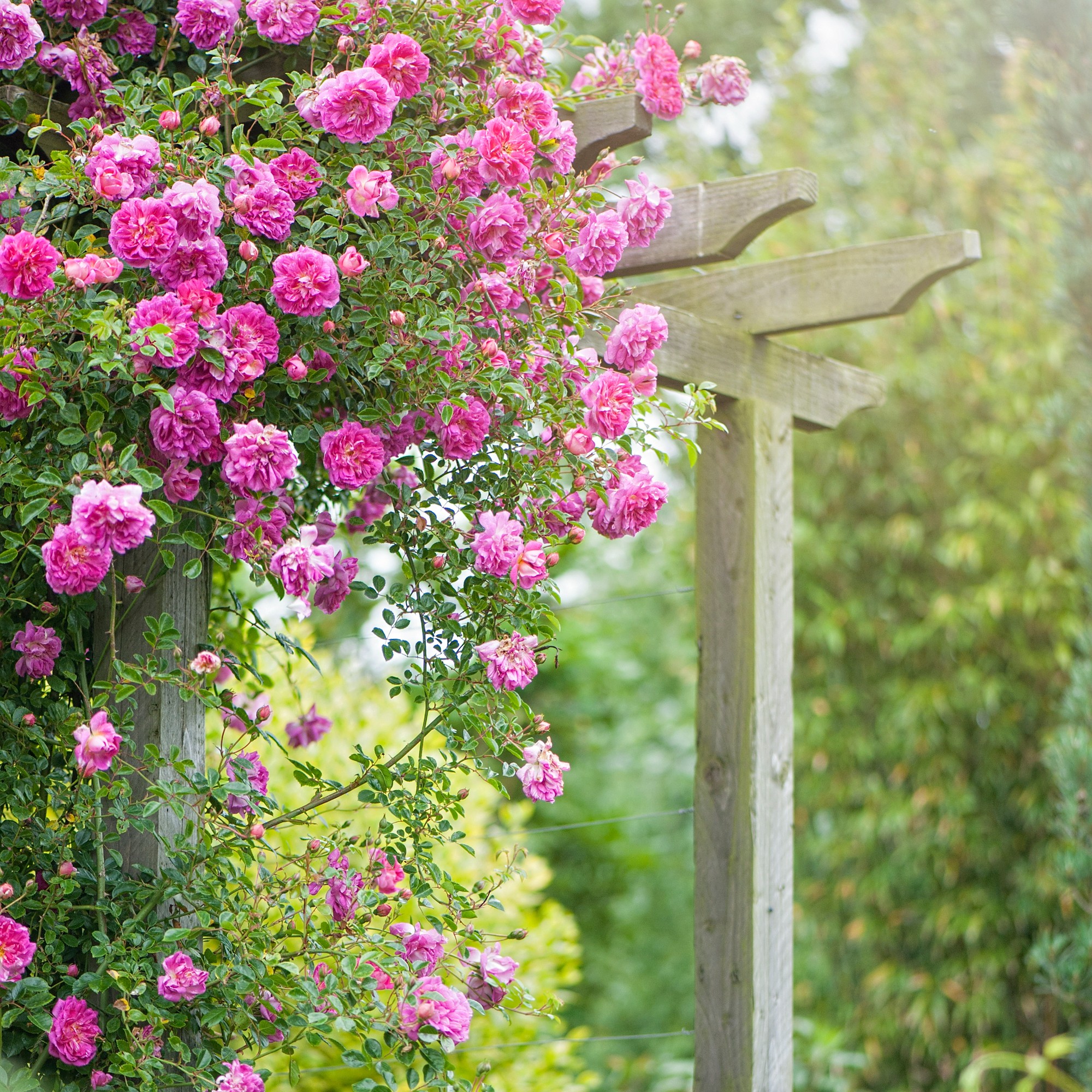
Step-by-step guide
Just as you would propagate peonies from cuttings, you need to make sure that you tackle this job at the right time of year.
'The best time to take softwood rose cuttings is late spring and early summer from new soft growth,' says Morris. 'So look for the current season's stems to take cuttings from, and be sure to select only the healthiest, disease-free stems – around the approximate size of a pencil.'
Once that's done, you'll want to do the following...
1. Take the cutting
This is How To Grow Roses From Cuttings 101, so yes, you'd best believe the first step is taking the cutting itself.
‘First, select healthy stems from the parent rose plant and cut them at a 45-degree angle just below a leaf node,’ says Petar Ivanov, Fantastic Gardeners' gardening expert.
Your cutting should be about 20cm long, and be sure to always use clean and sharp secateurs to avoid any damage or disease caused by dirty or blunt tools.
'Don't forget to cut above the bud at the top so the cutting doesn’t put all its energy into that rather than growing strong roots,' advises Morris.

Petar Ivanov is one of the company's top-performing experts and manages over six teams of gardeners, delivering stunning landscape results and fostering a deep connection with nature through his work.
Your cutting should be about 20cm long, and be sure to always use clean and sharp secateurs to avoid any damage or disease caused by dirty or blunt tools.
'Don't forget to cut above the bud at the top so the cutting doesn’t put all its energy into that rather than growing strong roots,' advises Morris.
2. Remove the leaves
Steve Chilton, garden expert at LeisureBench, says that the next step is to ‘remove any leaves from the lower two-thirds of the stem to reduce water loss and encourage root formation. And make sure to keep one leaf at the top.’

Steve is a passionate and knowledgeable garden expert with several years of experience within the field. As the director of LeisureBench, an industry-leading garden furniture company, Steve has developed strong expertise for all things nature and plants.
Then, dip the end of the stem in a rooting hormone to encourage root growth before planting it in soil.
3. Plant the cutting
'Cuttings can be planted into small containers of compost mixed with sand or horticultural grit, or they can be planted into a small trench that has horticultural grit in the bottom,' says Morris.
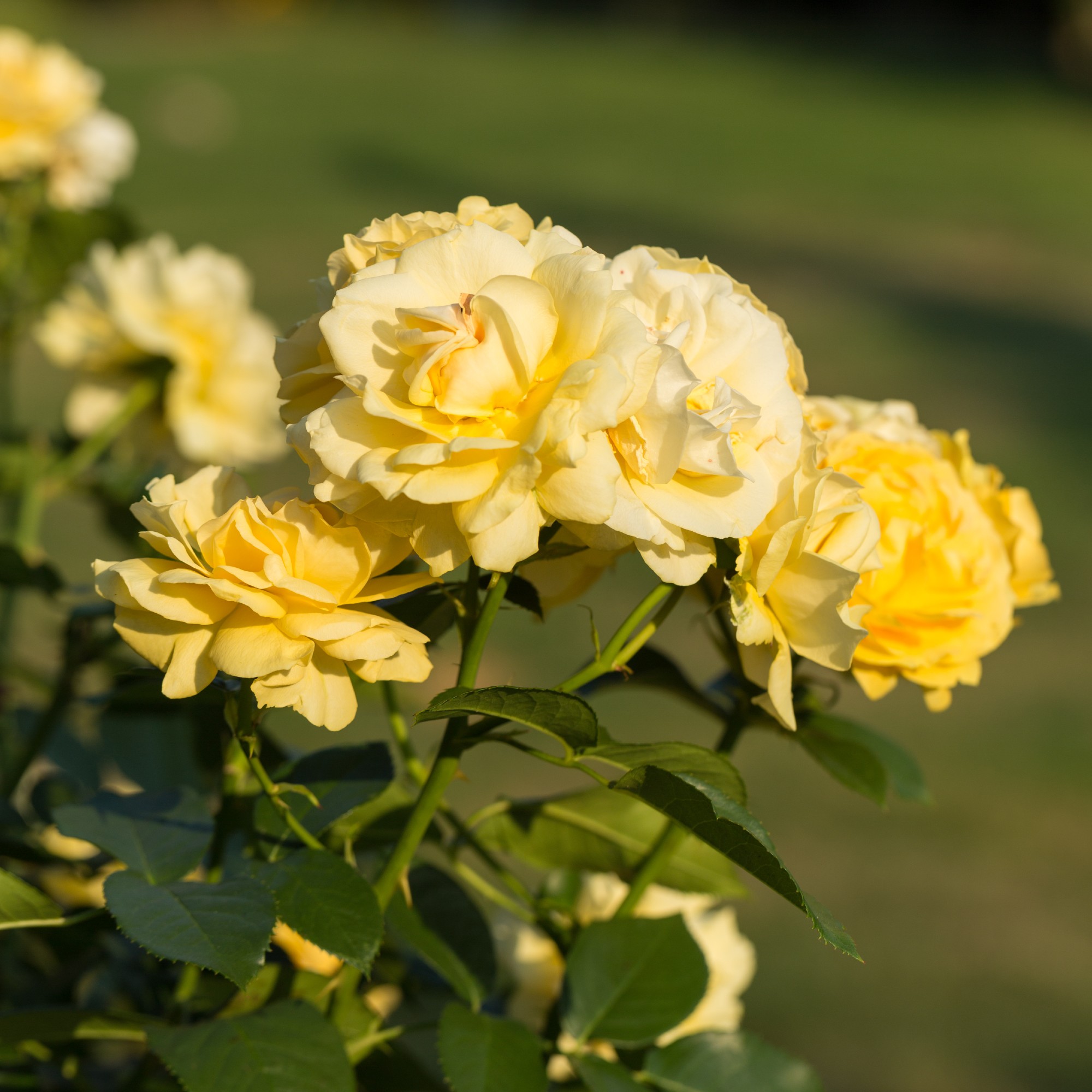
'Make sure that the soil is kept consistently moist but never waterlogged,’ adds Steve, 'and keep the cuttings are in a shaded spot until the cuttings have properly rooted.’
4.Show them some love
Now that your rose cuttings are planted, it's up to you to keep them thriving.
'Keep them moist and check to see if they have rooted in about two months by gently tugging on the stem,' says Morris.

'Rose cuttings can usually be transplanted to the final growing space or a larger pot in about a year and will flower a year or two later,' he adds.
'They're well worth the wait!'
FAQs
What time of year do you take rose cuttings?
While the best time to take rose cuttings from most of the flower varieties falls on ‘late spring or early summer when the rose plant is actively growing and new growth is still soft and flexible,’ according to Petar, the absolute best time to take your rose cuttings will heavily depend on what kind of rose you have.
‘You need to make sure you always take cuttings from the current season's growth, but what time of year you take the cuttings all depends on the type of rose,’ Steve says. ‘For example, softwood rose cuttings should be taken off the new growth around summer time, while semi-hardwood cuttings need to be taken in early autumn, and hardwood cuttings need to be taken in winter.’
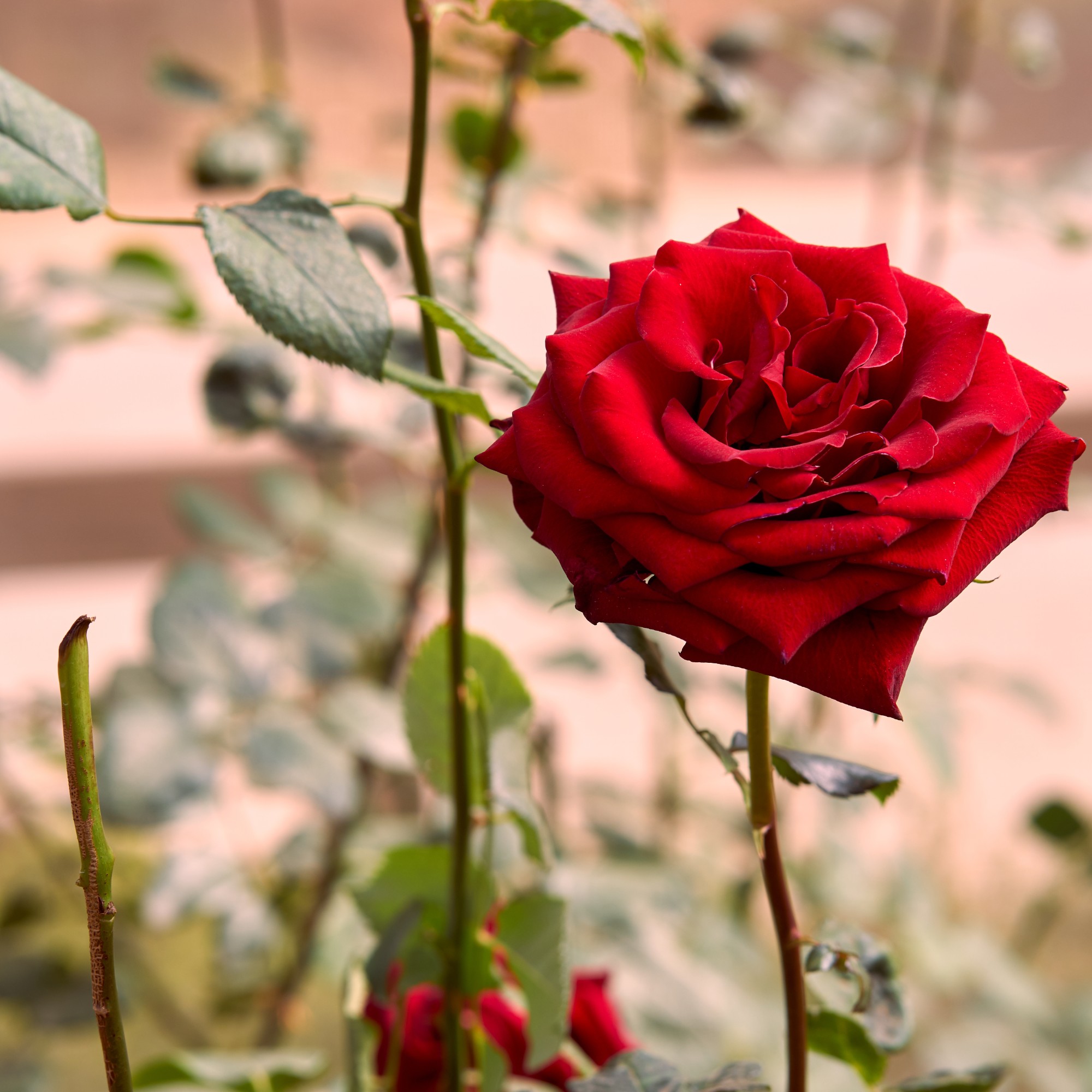
Is it better to root rose cuttings in water or soil?
As mentioned above, rose cuttings should be planted and rooted in soil, rather than water.
‘I recommend rooting them in soil instead of water. This is because soil provides a more stable and supportive environment for the cutting, compared to water. Water could cause several issues, including rotting and slow-growth of roots, so it's better to opt for a well-draining soil that has the right nutrients and support for healthy root formation,’ Steve explains.
So, there we have it: learning how to grow roses from cuttings is the best way to fill your garden with blooms.
It'll be like something out of a fairytale, we promise!

Sara Hesikova has been a Content Editor at Ideal Home since June 2024, starting at the title as a News Writer in July 2023. She is now also the Ideal Home Certified Expert in Training on Furniture, and so far has tested 80 different sofas.
Graduating from London College of Fashion with a bachelor’s degree in fashion journalism in 2016, she got her start in niche fashion and lifestyle magazines like Glass and Alvar as a writer and editor before making the leap into interiors, working with the likes of 91 Magazine and copywriting for luxury bed linen brand Yves Delorme among others.
- Kayleigh DrayActing Content Editor
-
 I finally got my hands on the sellout Morris & Co armchair from Habitat, and it looks even better in person
I finally got my hands on the sellout Morris & Co armchair from Habitat, and it looks even better in personIt's back in stock, and well worth the wait
By Rebecca Knight
-
 How to stratify seeds – gardening pros swear by this secret to a thriving garden
How to stratify seeds – gardening pros swear by this secret to a thriving gardenThis little-known secret is a must for a lush garden this year
By Kayleigh Dray
-
 Cinema sofas are this year's breakout furniture trend, but are you a fan of this controversial sofa style?
Cinema sofas are this year's breakout furniture trend, but are you a fan of this controversial sofa style?Let us know in the comments
By Rebecca Knight